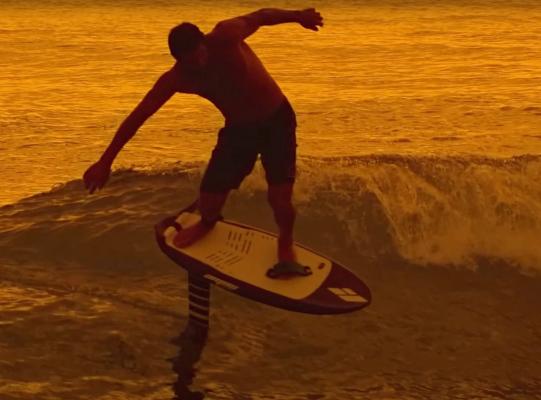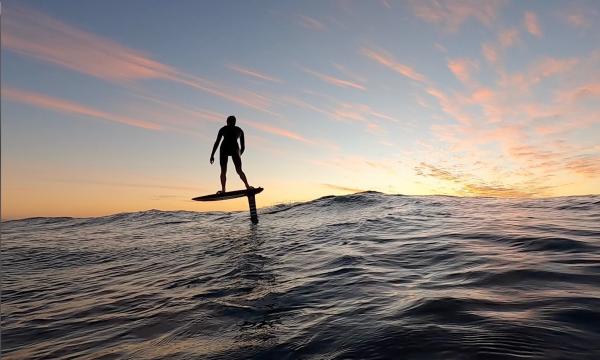Noosa foil surfers last week formed an alliance aimed at promoting safe, sustainable practices in the surf.More than 30 foilers gathered in Noosa and remotely to discuss the elements of a proposed code of conduct at a meeting convened by veteran waterman and Noosa-based tech entrepreneur Guy Schroeder, who later told Noosa Today: “At this stage it’s just a group of like-minded people who don’t claim to represent all of the foiling community, but want to see mutual respect between all the surfing groups as we work out how to deal with the facts that there are often too many people in the water, and that this can lead to hostile attitudes. This is an issue for all surfers, not just foilers, but we are recognising that we are part of the challenge, and we are seeking solutions, not conflict.”
Mr Schroeder pointed out that while there were problems with surfers using foils on crowded point breaks, the majority of foilers were looking for optimum conditions that are quite different from those sought by surfboard riders. “Foils need 1.2 metres of water beneath them, so that means the higher tides are more suitable, and we are looking for a fat swell that will carry the foiler a long way. So in theory there is no reason that a code of conduct could not keep the two apart. In fact it’s already happening, because most foilers who know how to use their craft also know where they are dangerous and where they are not.”
Mr Schroeder also said the group was putting together statistics on accidents involving all types of surfcraft so that the dangers could be better understood, but, he added: “There are very few reports of foiling injuries so far, and where they have occurred it is usually cuts or bruising to the rider.”
Surfing surgeon Dr Ian Martin, in a letter to the media in response to recent articles about dangers from foils, said: “A meta analysis of surfboard injuries shows most are from the rider’s own board and 46 percent are skin lacerations. I suspect there may be more skin lacerations with foiling as the wings are sharper, however the lighter weights, compared to stand up paddle boards and longboards, might suggest less concussive head injuries, broken bones and deep bruising.”
The as-yet unnamed Noosa foiling group will be represented at a round-table conference of all local surfing stakeholders to discuss surf safety issues being facilitated by Noosa Shire Council and Noosa World Surfing Reserve later this month.








